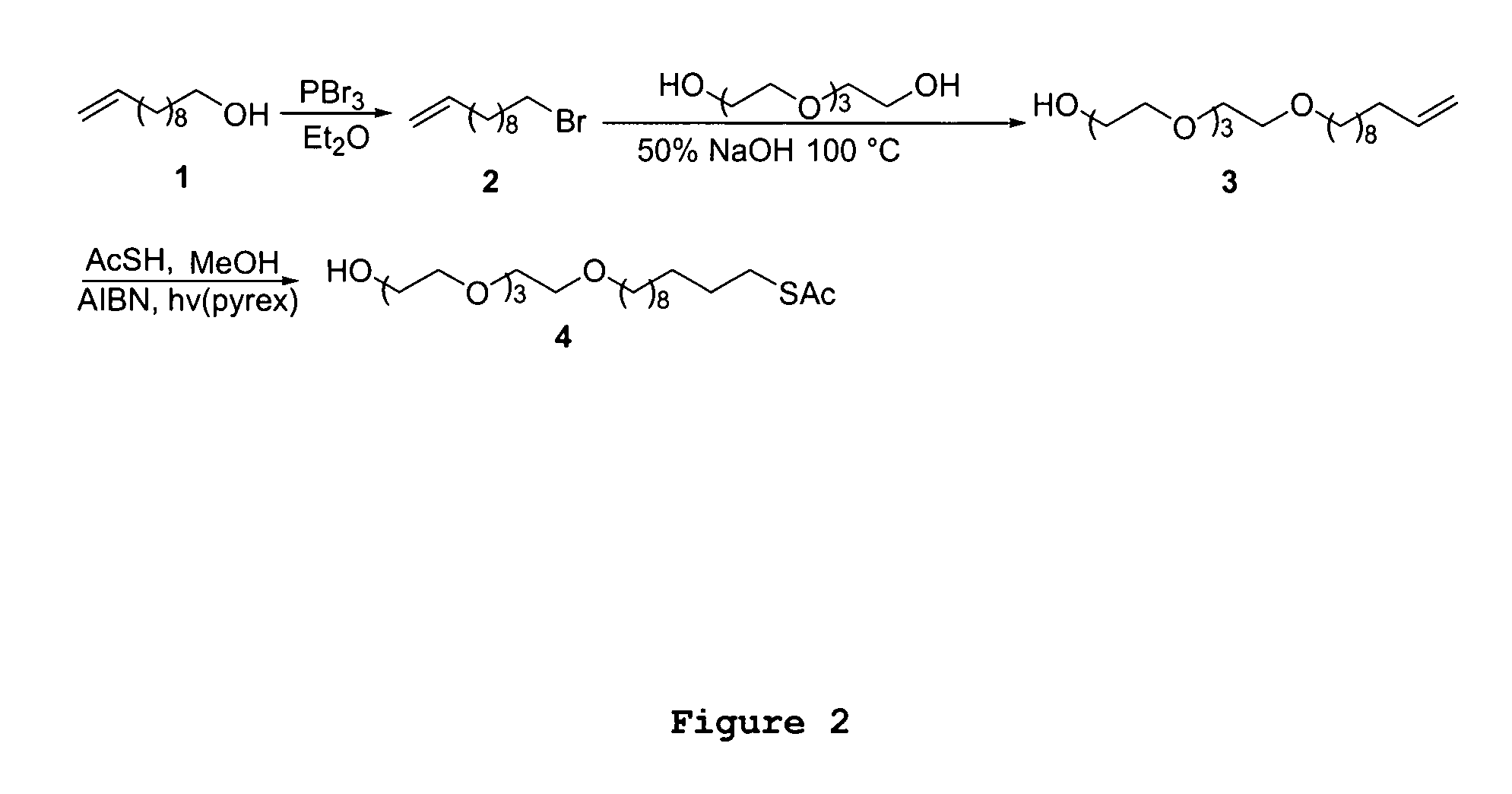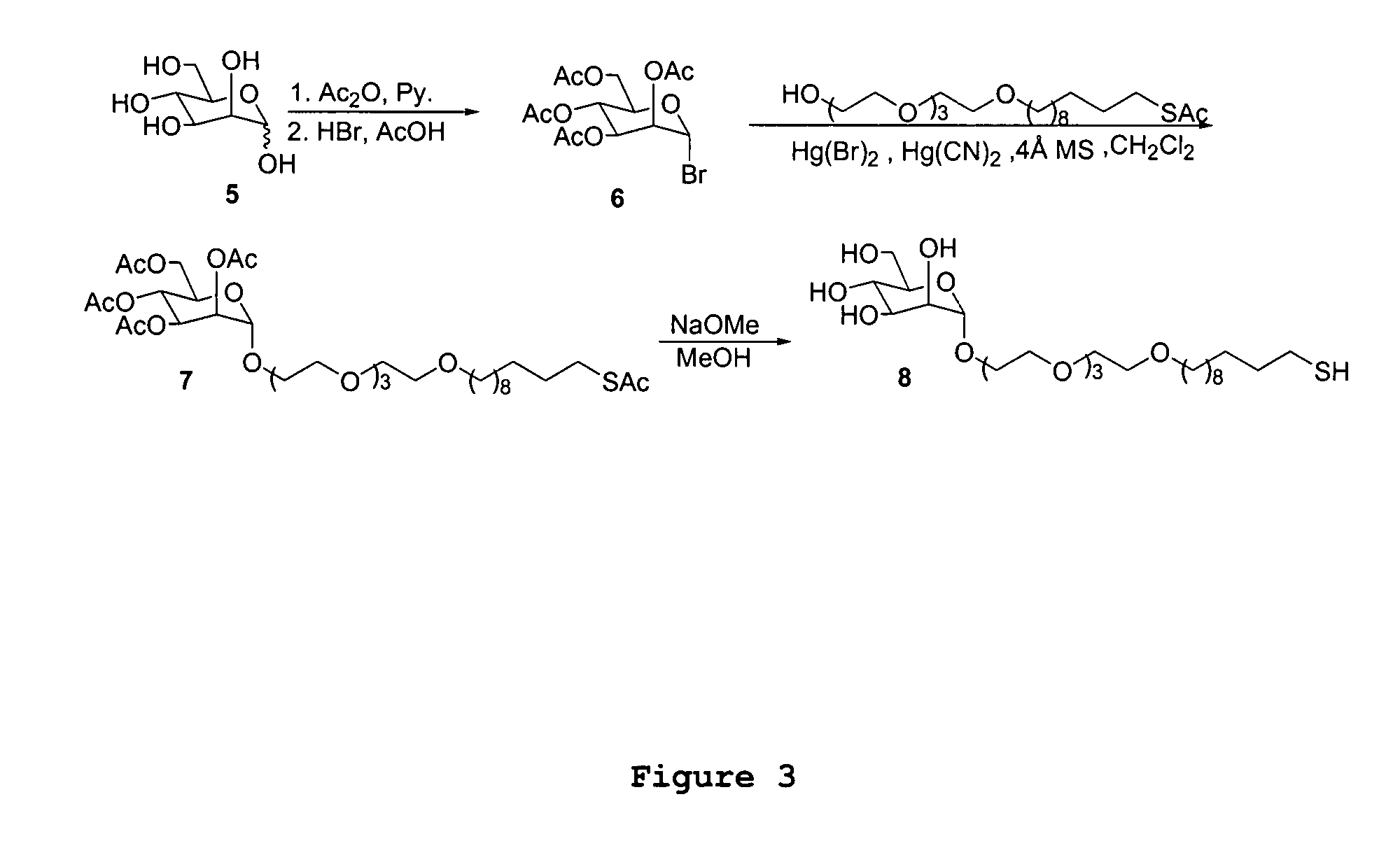Method of microorganism detection using carbohydrate and lectin recognition
a technology of lectin recognition and microorganisms, applied in the field of microorganism binding, can solve the problems of requiring 1-2 days to obtain, failing to gain wide acceptance, and time-consuming conventional methods, and achieve the effect of reducing non-specific adsorption
- Summary
- Abstract
- Description
- Claims
- Application Information
AI Technical Summary
Benefits of technology
Problems solved by technology
Method used
Image
Examples
Embodiment Construction
[0038]All patents, patent applications, government publications, government regulations, and literature references cited in this specification are hereby incorporated herein by reference in their entirety. In case of conflict, the present description, including definitions, will control.
[0039]High percentages of harmful microbes or their secreting toxins bind to specific carbohydrate sequences on human cells at the recognition and attachment sites. A number of studies also show that lectins react with specific structures of bacteria and fungi. We take advantage of the fact that a high percentage of micro-organisms have both carbohydrate and lectin binding pockets at their surface. It is demonstrated here for the first time that a carbohydrate non-label mass sensor in combination with lectin-bacteria recognition can be used for detection of high molecular weight bacterial targets with remarkably high sensitivity and enhanced specificity. A functional mannose self assembled monolayer ...
PUM
| Property | Measurement | Unit |
|---|---|---|
| concentrations | aaaaa | aaaaa |
| refractive index | aaaaa | aaaaa |
| incident angle | aaaaa | aaaaa |
Abstract
Description
Claims
Application Information
 Login to View More
Login to View More - R&D
- Intellectual Property
- Life Sciences
- Materials
- Tech Scout
- Unparalleled Data Quality
- Higher Quality Content
- 60% Fewer Hallucinations
Browse by: Latest US Patents, China's latest patents, Technical Efficacy Thesaurus, Application Domain, Technology Topic, Popular Technical Reports.
© 2025 PatSnap. All rights reserved.Legal|Privacy policy|Modern Slavery Act Transparency Statement|Sitemap|About US| Contact US: help@patsnap.com



